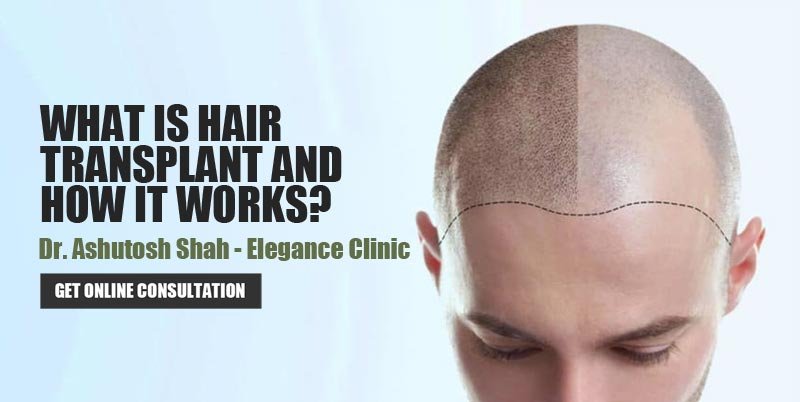What is Hair Transplant and How it Works?
Hair transplantation is a surgical technique that removes hair follicles from the donor site part of the body to a bald or balding part of the body known as the recipient site. The technique is mainly employed to treat male baldness. Grafts containing hair follicles that are genetically resistant to balding (such as the back of the head) are transplanted into the bald scalp during this minimally invasive process. Hair transplantation can also be used to restore eyelashes, eyebrows, beard hair, chest hair, and to fill scars caused by accidents or operations such as facelifts and previous hair transplants. Hair transplantation differs from skin grafting in that grafts contain almost all the epidermis and dermis around the hair follicle and many small grafts are transplanted instead of a single skin strip.
The procedure of Hair Transplant at Elegance Clinic:
Pre-operative evaluation and planning
The surgeon will analyze the scalp of the patient during the initial consultation, discuss their preferences and expectations and advise them on the best approach (for example. One vs. Multiple sessions) and the results that could be reasonably expected. Preoperative folliscopy will help to determine the actual existing hair density so that postoperative results of newly transplanted grafts can be accurately evaluated. Some patients can benefit from the use of topical preoperative monoxides and vitamins
Methods of harvest
Transplant operations are carried out on an outpatient basis with mild (optional) sedation and local anesthesia injected. The scalp is shampooed and treated with an antibacterial agent before harvesting the donor scalp. There are various hair follicle harvesting techniques, each with its own advantages and disadvantages. Regardless of the harvesting technique, proper hair follicle extraction is essential to ensure the viability of the transplanted hair and to avoid transection, the hair shaft is cut from the hair follicle.
Belt harvesting
Belt harvesting is the most common method to remove hair and follicles from a donor site. The surgeon harvests a skin strip from the back of the scalp in a good hair growth area. A single, double or triple-bladed scalpel is used to remove strips from the donor site of hair-bearing tissue. Each incision is planned to remove intact hair follicles. The strip has a size of 1–1.5x 15–30 cm. When the resulting wound is closed, assistants start dissecting individual follicular unit grafts from the strip, which are small, naturally formed groups of hair follicles.
Follicular unit extraction (FUE)
Under local anesthesia, individual follicular units containing 1 to 4 hairs are removed with follicular unit extraction or FUE harvesting; this micro removal typically uses small punches between 0.6 mm and 1.0 mm in diameter. The surgeon then uses very small microblades or fine needles to puncture the graft sites, place them in a predetermined density and pattern and anchor the wounds consistently to promote a realistic hair pattern. The technicians usually carry out the final part of the procedure and insert the individual grafts.
Surgery Types At Elegance Clinic:
There are a number of applications for hair transplantation surgery, including:
(1) Androgenetic alopecia
(2) Eyebrow transplant
(3) Lowering or reconstruction of the frontal hairline (naturally high hairlines without an existing hair loss condition) If donor hair numbers from the back of the head are insufficient, Body hair transplant ( BHT) may be performed on the appropriate candidate

